
The fisheye lens is an invaluable tool in photography, renowned for its distinct visual impact and versatility. With its ultra-wide angle of view, the fisheye lens captures breathtaking panoramic shots, bringing an immersive and dynamic element to the image.
Whether used for architectural photography or creative storytelling, the fisheye lens adds depth and drama, pushing the boundaries of composition and perspective.
Its unique distortion effect, achieved through curved lines and exaggerated angles, creates a captivating and surreal visual experience.
Embracing the fisheye lens unlocks endless creative possibilities, transforming ordinary scenes into extraordinary masterpieces.
What are the features of a fisheye lens?
A fisheye lens exhibits specific values in terms of its focal length, aperture, weight and size, lens elements, and lens coating.
- Fisheye lenses typically have focal lengths ranging from 8mm to 16mm, allowing for an ultra-wide field of view.
- They often feature fast maximum apertures, such as f/2.8, enabling low-light photography and depth of field control.
- Fisheye lenses are compact and lightweight, making them portable and convenient for various shooting situations.
- They incorporate specialized lens elements to minimize distortion and maintain image quality.
- Advanced lens coatings, like multi-coating or nano-coating, are applied to reduce flare, ghosting, and increase contrast.
These values collectively contribute to the exceptional performance and unique visual effects that fisheye lenses offer to photographers.
Fisheye Lenses—Fixed Prime or Zoom?
Fisheye lenses are available in both fixed prime and zoom configurations, offering photographers different options based on their specific needs.
Fixed prime fisheye lenses have a single focal length, such as 8mm or 15mm, providing a consistent field of view and typically delivering sharper image quality.
They are favored for their compact size, wide maximum aperture, and the ability to achieve extreme wide-angle perspectives.
On the other hand, fisheye zoom lenses provide versatility by allowing photographers to adjust the focal length within a specific range, such as 8-15mm.
This flexibility enables them to compose shots with varying degrees of distortion and adapt to different shooting scenarios. Whether choosing a fixed prime or zoom fisheye lens depends on the desired level of creative control, convenience, and specific shooting requirements.
When would one consider the fish eye lens ?
- A fisheye lens is considered when a photographer seeks to capture an exceptionally wide field of view or desires to experiment with unique and distorted perspectives.
- It is particularly useful in situations where conventional lenses cannot encompass the entire scene or fail to convey the desired impact.
- Fisheye lenses excel in architectural photography, allowing photographers to capture entire buildings or interior spaces with a dynamic, curvilinear effect.
- They are also popular in landscape photography, showcasing sweeping vistas or emphasizing the grandeur of natural landscapes.
- Additionally, fisheye lenses find applications in creative genres like experimental photography, astrophotography, and capturing immersive wide-angle perspectives in video production.
- Fisheye lenses are widely used in underwater photography due to their wide angle of view, enabling photographers to capture the vastness of the underwater world, including coral reefs, marine life, and captivating seascapes.
Some fisheye lens recommendation
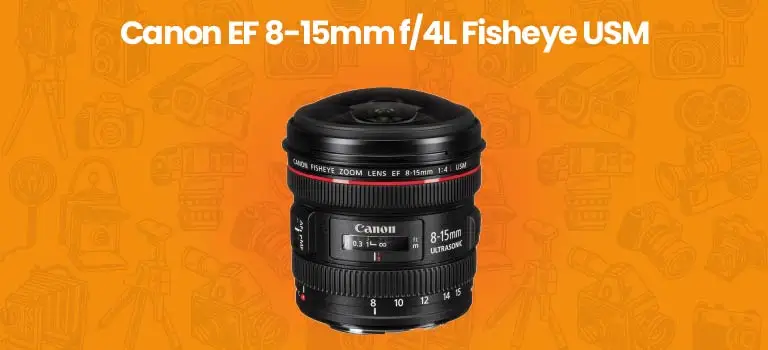
| Lens type | Ultra wide angle zoom lens |
| Compatible mounting | Canon EF |
| Best for | It offers extreme wide-angle shots with a circular or full-frame fisheye effect. It features professional-grade optics and fast, silent autofocus. |
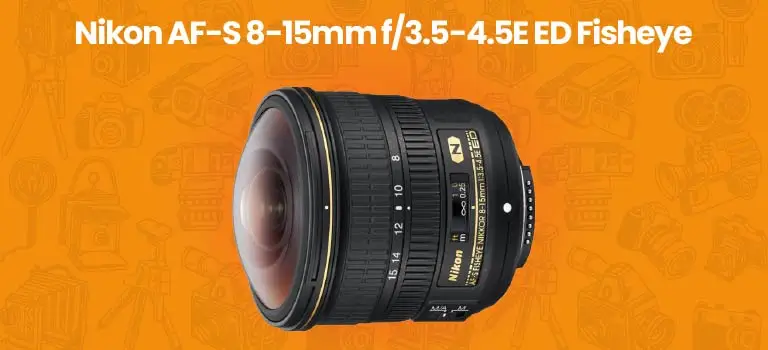
| Lens type | ultra-wide-angle zoom lens |
| Compatible mounting | designed for Nikon DSLR cameras with F-mount |
| Best for | Allows for extreme wide-angle shots with either a circular or full-frame fisheye effect. It features high-quality optics, advanced coatings, and fast, accurate autofocus capabilities. |
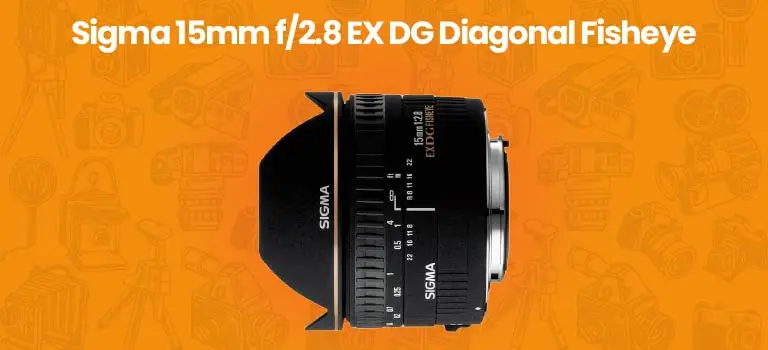
| Lens type | Prime fisheye lens |
| Compatible mounting | Canon EF, Nikon, Sony A, Sigma, and Pentax K mounts |
| Best for | Offers unique, distorted perspective with a 180-degree angle of view, ideal for creative and artistic wide-angle photography. |

| Lens type | prime fisheye lens |
| Compatible mounting | Canon EF-S, Canon-M, Nikon F, Sony E, Sony-A, Fujifilm X, Micro Four Thirds (MFT), Samsung NX, and Pentax K mounts |
| Best for | Offers a fast aperture for low-light shooting and a compact design. |
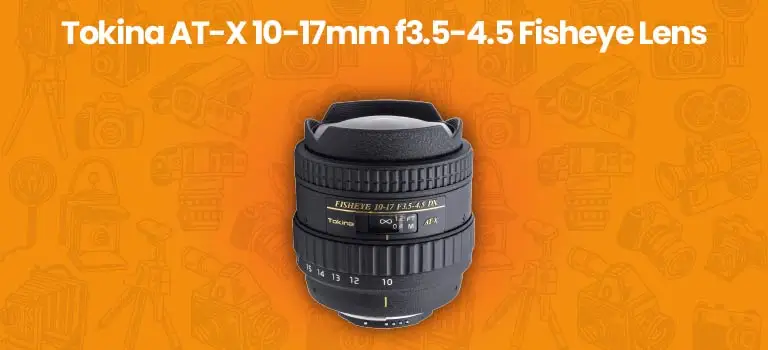
| Lens type | Zoom fisheye lens |
| Compatible mounting | Canon EF, Nikon F |
| Best for | Offers a zoom range for added versatility and is compatible with both Nikon and Canon cameras. |
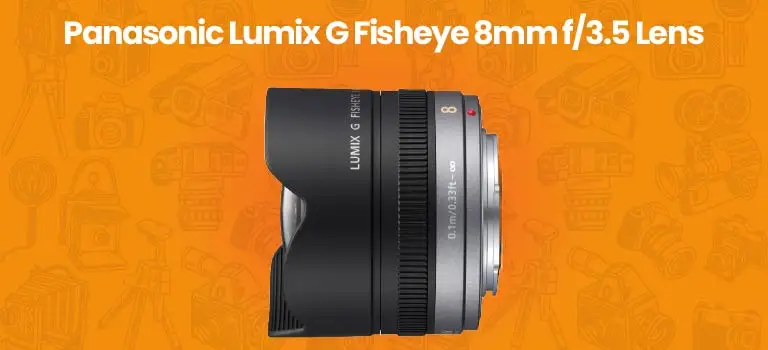
| Lens type | Prime fisheye lens |
| Compatible mounting | MFT |
| Best for | Ideal for Micro Four Thirds cameras, it provides a wide angle of view and a lightweight design. |
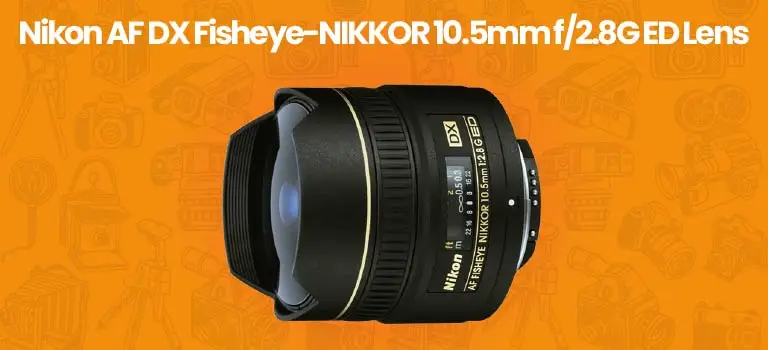
| Lens type | Prime fisheye lens |
| Compatible mounting | Nikon F-mount cameras with DX-format sensors, such as Nikon D500, D7500, and D5600. |
| Best for | Specifically designed for Nikon DSLRs, it offers excellent image quality and autofocus. |
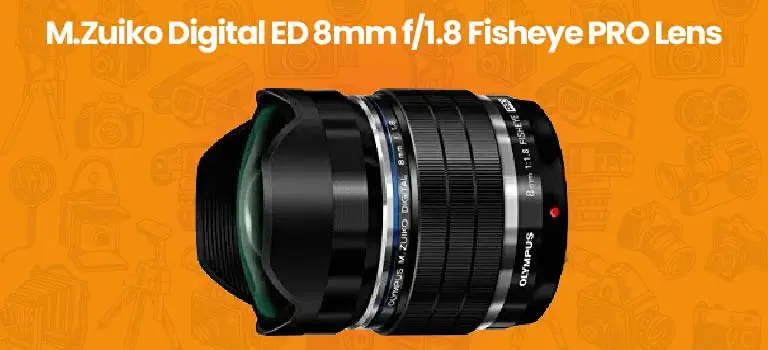
| Lens type | Prime fisheye lens |
| Compatible mounting | MFT |
| Best for | Designed for Micro Four Thirds cameras, it provides a fast aperture and excellent image quality. |
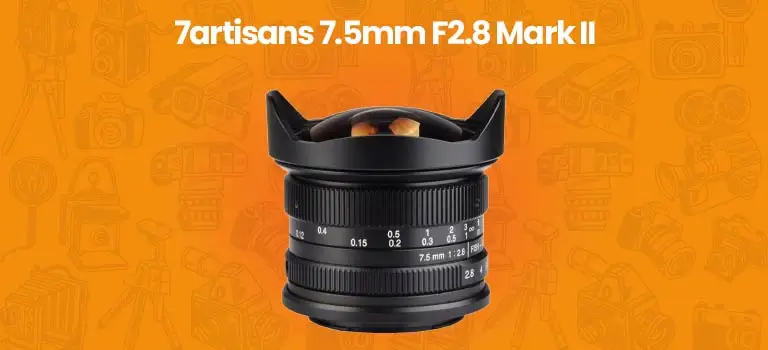
| Lens type | Wide angle prime lens |
| Compatible mounting | Sony E, Fujifilm X, Canon EOS-M, and Micro Four Thirds (MFT)
Designed for mirrorless camera systems |
| Best for | Provides a wide field of view with minimal distortion. |
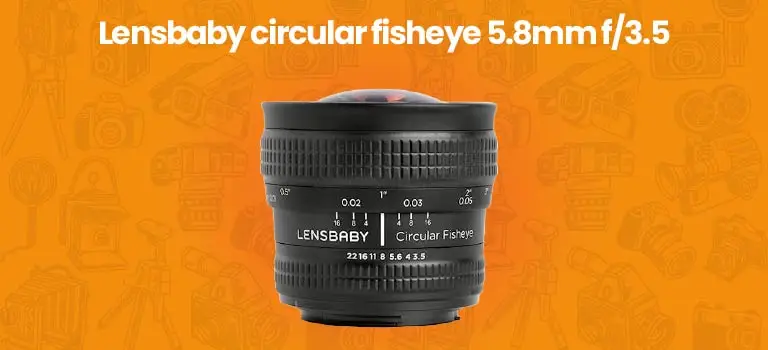
| Lens type | Wide angle fisheye lens. |
| Compatible mounting | Canon EF-S, Nikon F, Sony E, Fujifilm X, and Micro Four Thirds (MFT) |
| Best for | Best suited for creative and artistic photography. |
These lenses cater to different camera brands and formats, providing beginners with a range of options to suit their specific needs and preferences.
Some features to discuss
1- Fisheye lens and optical distortion
The fisheye lens is renowned for its unique optical distortion, which is a defining characteristic of this lens type. Optical distortion refers to the intentional bending and warping of straight lines and shapes, creating a distinct and exaggerated effect in the resulting image.
In the case of the fisheye lens, this distortion is particularly pronounced, resulting in curved lines, barrel distortion, and a convex appearance at the edges of the frame.
This intentional distortion is what gives fisheye images their distinct visual impact. It adds a sense of drama, depth, and artistic flair to photographs, making them visually striking and memorable. It transforms ordinary scenes into extraordinary and often surreal compositions.
However, it is important to note that the extent of distortion can vary among different fisheye lenses, with some lenses producing a more extreme effect than others.
Photographers who embrace the fisheye lens and its optical distortion have the opportunity to explore new perspectives and unleash their creativity. They can use this distortion to their advantage, creating visually captivating images that challenge traditional composition and perspective.
By deliberately manipulating lines and shapes through the lens’s distortion, photographers can craft unique and compelling visuals that stand out from the ordinary.
2- Fisheyes: Circular and Rectangular
Fisheye lenses come in two main types: circular and rectangular.
| Circular fisheye lenses | Rectangular fisheye lenses |
Around 4mm to 8mm |
Typically between 8mm to 16mm |
180 degrees or more |
120 degrees to 180 degrees |
The subject is centered, and the rest of the frame is filled with black or blank space |
Captures a wider angle of view, covering the entire rectangular frame without blank spaces |
| Circular fisheye lenses tend to provide a more pronounced and visually striking effect. | rectangular fisheye lenses offer a wider angle of view and a larger usable image area. |
The choice between circular and rectangular fisheye lenses depends on the photographer’s preference and the desired visual outcome for a particular shoot.
3- How Are Fisheyes Different from Rectilinear Ultra-Wide-Angle Lenses?
Fisheye lenses and rectilinear ultra-wide-angle lenses are both wide-angle lenses, but they have distinct differences in terms of their field of view and optical characteristics.
Field of View:
Fisheye camera lenses have an extremely wide field of view, typically exceeding 180 degrees, allowing them to capture a vast scene with a pronounced circular or rectangular distortion.
In contrast, rectilinear ultra-wide-angle lenses offer a wide field of view but aim to maintain straight lines and minimize distortion. They usually have a field of view ranging from 100 to 120 degrees.
Distortion:
These lenses intentionally produce a distinctive distortion effect, resulting in curved lines and a convex appearance at the edges of the frame. This distortion creates a unique visual impact and is a defining characteristic of fisheye lenses. In contrast, rectilinear ultra-wide-angle lenses aim to minimize distortion, providing a more natural and straight representation of lines and shapes.
Image Projection:
Fisheye lenses project the entire scene onto the image sensor or film, resulting in a circular or full-frame fisheye effect. Rectilinear ultra-wide-angle lenses, on the other hand, project a rectangular image onto the sensor or film, preserving straight lines and maintaining a more traditional wide-angle perspective.
Perspective:
Fisheye lenses provide an exaggerated perspective, emphasizing the foreground and creating a sense of depth and immersion.
Rectilinear ultra-wide-angle lenses offer a more realistic perspective, maintaining a more proportional representation of objects and distances.
4- Fisheye lenses in videography:
Fisheye lenses in videography provide a distinct perspective with an exaggerated wide-angle view and pronounced distortion. They add visual impact, especially in action and sports footage, create unique compositions, and offer opportunities for experimental filmmaking, making them ideal for engaging and dynamic visual storytelling.
Conclusion
In conclusion, the fisheye lens is a powerful tool that expands the creative horizons of photographers and videographers alike. With its ultra-wide field of view and distinctive distortion, it offers a unique perspective that adds depth, impact, and artistic flair to images and footage.
Whether used in landscape photography, architectural shots, or experimental videography, the fisheye lens opens up a world of creative possibilities. From capturing stunning landscapes to creating dynamic and immersive visuals.
this lens allows artists to push the boundaries of traditional composition and create captivating and memorable content that leaves a lasting impression on viewers. The fisheye lens truly unlocks a new dimension of visual storytelling.

Leave a Reply
You must be logged in to post a comment.